Galeria de retlaw snellac
the world part 1
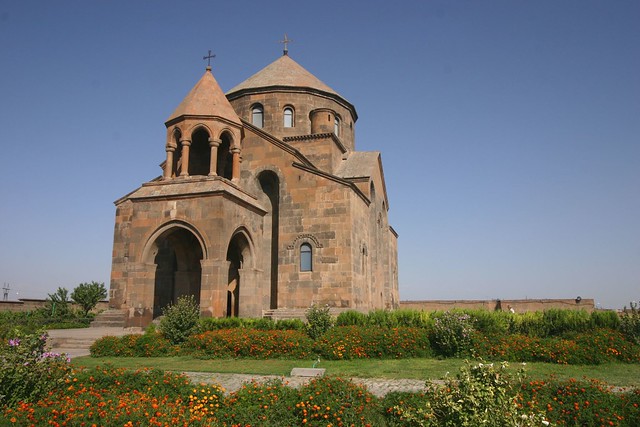
armenia
Church of St. Hripsime was built in Echmiadzin on the orders of Catholicos Komitas in 618. The date of the church is confirmed by Catholicos Komitas' two signatures (one inside the building, over the Eastern apse; the other, outside, over the Western entrance to the cathedral), and also by Sebeos, a 7th century historian. The architectural forms, decorative motives of the window ledges and numerous marks of master masons show St Hripsime's affinities with its 6th-7th century counterparts. It is interesting to consider the church's stone structures, particularly; the sub-dome transition with the enormous, well elaborated stepped squinches.
According the legend, Hripsime died here...
Hripsime was a very beautiful and devoted woman. The Roman Emperor Diocletian (a
pagan) falled in love with here. She decided to fled to Armenia with 32 maidens but unfortunately, King Trdat III falled also in love with here ! She refused to marry him and was killed... with her 32 companions.
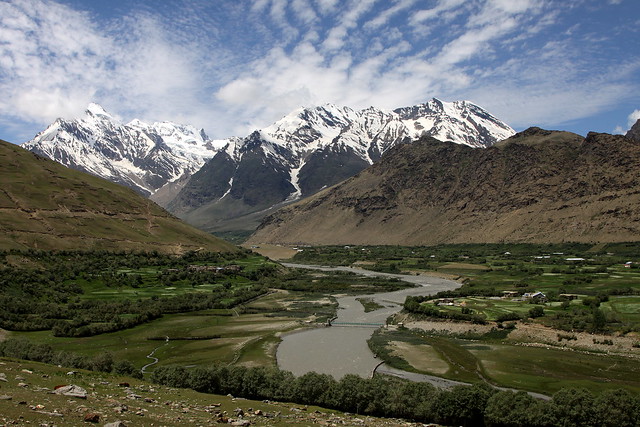
india - ladakh
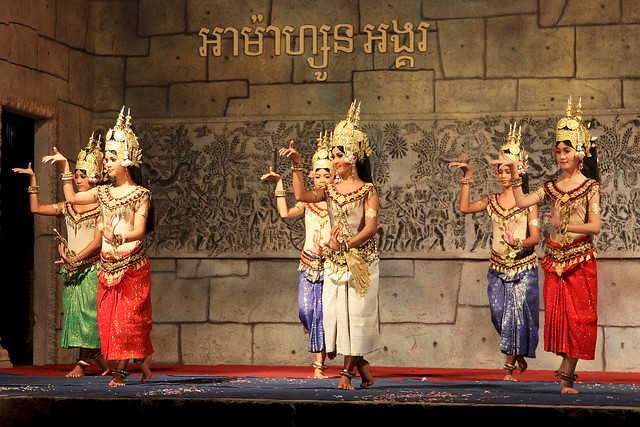
cambodia
Khmer Dance.
Classical Dance of Cambodia.
The epic poem of Rama (Ramayana) is believed to have been revealed to a Hindu holy man named Valmiki by Brahma, the god of creation. This religious literary work is known in various versions throughout India and Southeast Asia. In Cambodia, the story has been set to music and dance and performed by the Royal Ballet since the 18th century. Although the epic is also known in the villages, where it is translated orally or dramatized in the popular shadow puppet theater, the ballet was traditionally a courtly art performed in the palace or for princely festivals. The music of the ballet is performed by the Pinpeat orchestra, which is made up of traditional xylophones, metallophones, horizontal gongs, drums, and cymbals.
Khmer classical dance derived from Indian court dance, which traces its origins to the apsarases of Hindu mythology, heavenly female nymphs who were born to dance for the gods. The traditions of Thailand and Java (in Indonesia) also influenced the music and dance of Cambodia. In classical Cambodian dance, women, dressed in brightly colored costumes with elaborate headdresses, perform slow, graceful movements accompanied by a percussive ensemble known as the pinpeat. Pinpeat orchestras include drums, gongs, and bamboo xylophones.
At the heart of classical form is the Apsara, the joyful, almost wanton dancer whose images are everywhere. The graceful movements of the Apsara dancers, adorned with gold headdresses and silken tunics and skirts, are carved on the walls of many of the temples at Angkor. Estimates are that there were 3,000 Apsara dancers in the 12th century court of King Jayavarman VII.
See also:
www.flickriver.com/photos/waltercallens/random/
www.flickr.com/photos/waltercallens/favorites/
english.cohga.net/flickr/user/74089637@N00_1.html

yemen
Shepherdress with a typical headgear in the Wadi Hadramawt.
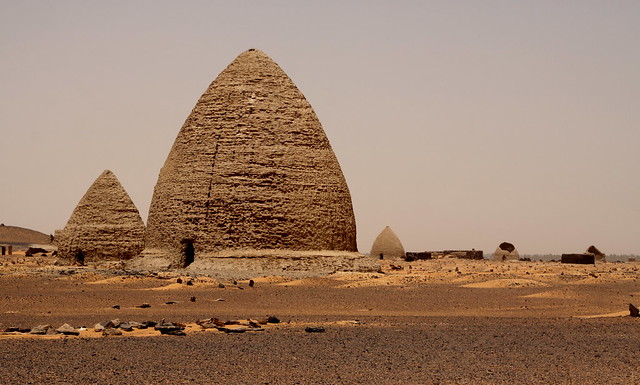
sudan - the black pharaohs
Graveyard and Qubbas (Old Dongola).
Qubba: literally 'dome', often used to refer to a domed mausoleum which contains the grave of a saint or some important personage.
Old Dongola is a town in Sudan, on the east bank of the Nile opposite the Wadi Al-Malik. It is 50 miles (80 km) upstream from (New) Dongola. Old Dongola was the departure point for caravans west to Darfur and Kordofan.
From the fourth to the fourteenth century it was the capital of the Makurian state. In the Fifth Century Old Dongola was founded as fortress, but became soon a town. Latest with the arrival of Christianity it became the capital. Several churches were built. There was the Building X and the Church with the Stone Pavement. There were erected about 100 m apart from the walled town centre, indicating that at this time the town already extended over the original walls of the fortress. In the middile of the Seventh century, the town was attacked by the Arabs, but was not conquered. However, the two main churches were destroyed, but shortly after rebuild. Building material of the Old Church was used for supporting the city walls.
The Church of the Granite Columns was erected at the end of the Seventh Century
over the Old Church. It was perhaps the cathedral of Old Dongola and adorned with 16 granite columns. These columns had richly decorated granite capitals. At the place of the Church of the Stone Pavements, the Cruciform Church was erected. At this time Old Dongola had many other churches, at least two palaces, and in the North a huge monastery. Several houses were well equipped and had bath rooms and wall aintings.
In the Thirteenth and Fourteenth Century, the town lost importance. It was several times attacked by Arabs and the throne room of the palace was converted to a mosque.
Under the Funj, Old Dongola was the capital of the Norther provinces.When the traveller C.J. Poncet travelled through the city, he described it as located on the slope of a sandy hill. His description of Old Dongola continues: " he houses are ill built, and the streets half deserted and fill'd with heaps of sand, occasion'd by floods from the mountains. The castle is in the very center of the town. It is large and spacious, but the fortifications are inconsiderable. It keeps in awe the Arabians, who are masters of the open country".
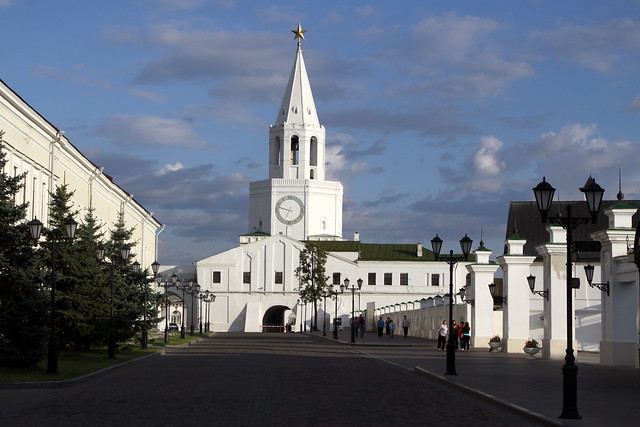
russia - kazan
Spasskaya Tower Gate (Kremlin, Kazan).
The Kazan Kremlin rebuilt in stone after the capture of Kazan by Ivan the Terrible in 1552. There are 13 Towers (Spasskaya Tower Gate, Preobrazhenskaya…etc), the Tower of Suyumbike, named in honor of the last Tsarina of Kazan; The Presidential Palace, The Buildings of Artillary Yard, The Kul Sharif mosque – a symbol of Tatarstan`s Islamic revival, The Monument to the architects.

the silk road
Tajik landscape on the way from Dushanbe to Komsomolobad.
Tajiks are one of the most ancient nations of the world. Life in area situated at the main crossroads of eastern civilizations has given them continuous access to the achievements of other cultures. First settlement on the territory of today's Tajikistan date back to the end of upper Paleolithic period (15-20 thousand years ago). Archaeological finds, the works of Herodotus and other written evidence provide information on trading relations, customs, and rituals of the nation. For many centuries the country, involved mainly in trading with neighbours suffered from foreign invasions by the troops of Alexander the Great, steppe nomads, Arabs and Tatar-Mongols.
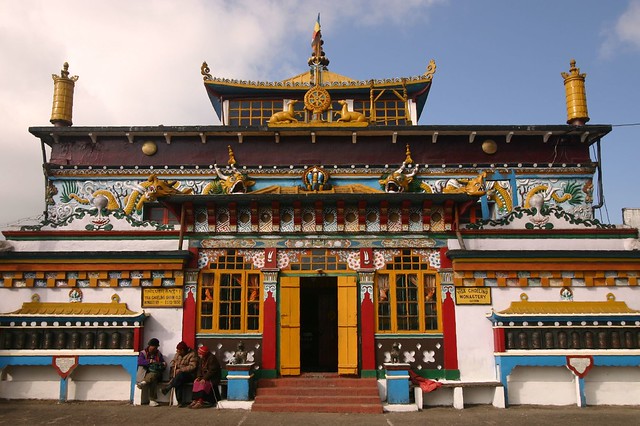
india - darjeeling
The Yigacholing Monastery at Ghum.
Ghum is a small hilly locality in the Darjeeling Himalayan hill region of West Bengal, India.
At Ghum Yigacholing Monastery enshrines the famous statue of Maitreya Buddha
(the coming Buddha).
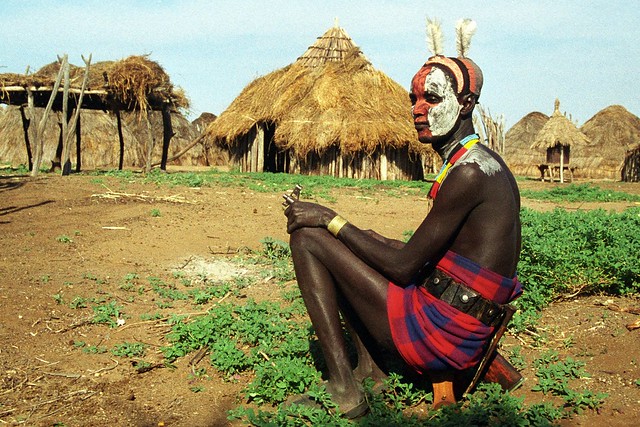
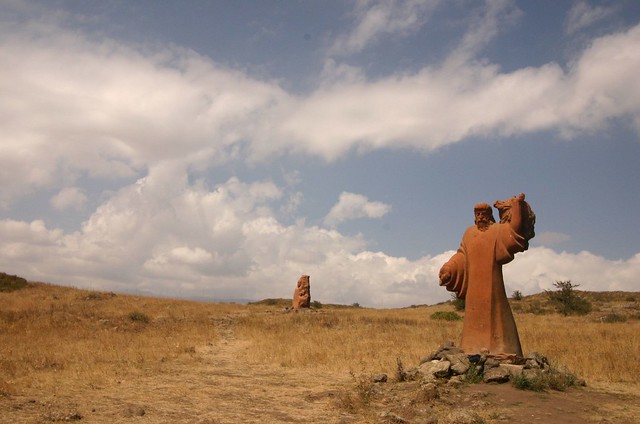
armenia
Statue of the inventor of the Armenian alphabet, Mesrop Mashtots.
The massive stone carved letters of the Armenian alphabet are clustered under the skirts of Mt. Aragats. This new addition to the landscape, only a couple of years old, is already a popular spot to stop.
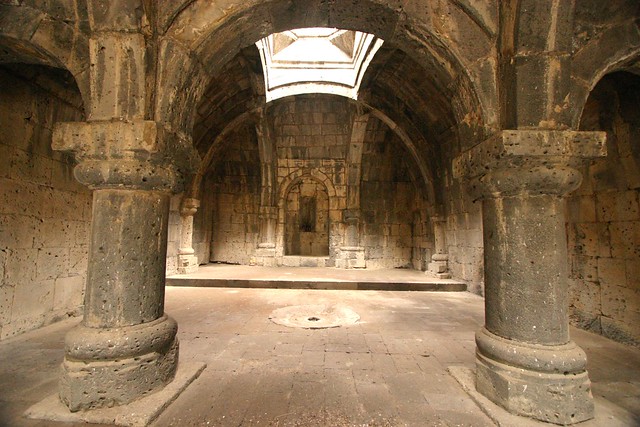
armenia
Inside the main church of the Haghpat Monastery.
This pearl of a monastery perched on the lip of the Debed Canyon has Unesco World Heritage status, along with Sanahin. This place has atmosphere and archictectural splendour in abundance and the views around the canyon alone are worth the trip. Founded around 976 by Queen Khosrvanuch, who built Surp Nishan at the centre of the walled complex., it really took off in the 12th cntury with a magnificent bell tower, library and refectory. An inscription on the gavit of Surp Nishan reads in part 'You who enter through its door and prostrate yourself before the Cross, in your prayers remember us and our royal ancestors, who rest at the door of the holy cathedral, in Jesus Christ'. Uphill is the bell tower, and off by the wall a stone refectory. Khatchkars and study halls surround the central church.
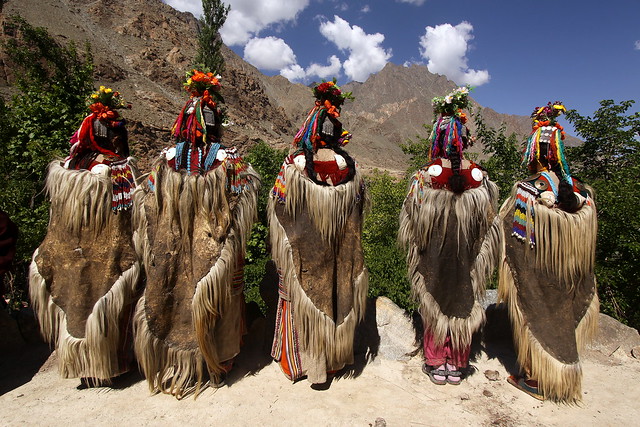
india - traditional dances and culture of the brokpa people
India - Traditional dances and culture of the Brokpa people - A tribal community in the Dha-Hanu valley of Ladakh.
Drokpa (or Brokpa) community is considered as the last race of Aryans, confined to the Dha valley. Their features are pure Indo Aryan and they have preserved their racial purity down the centuries.
Their culture and religious practices are very similar to ancient pre- Buddhist religion known as Bon-Chos. Both the men and women folk adorn headgears made with handpicked fresh flowers, every single day.

russia - moscow
St. Basil's Cathedral (Moscow, Russia).
The famous St. Basil's Cathedral was commissioned by Ivan the Terrible and built on the edge of Red Square between 1555 and 1561. Legend has it that on completion of the church the Tsar ordered the architect, Postnik Yakovlev, to be blinded to prevent him from ever creating anything to rival its beauty again. The cathedral was built to commemorate Ivan the Terrible's successful military campaign against the Tartar Mongols in 1552 in the besieged city of Kazan. Victory came on the feast day of the Intercession of the Virgin, so the Tsar chose to name his new church the Cathedral of the Intercession of the Virgin on the Moat, after the moat that ran beside the Kremlin. The church was given the nickname "St. Basil's" after the "holy fool" Basil the Blessed (1468-1552), who was hugely popular at that time with the Muscovites masses and even with Ivan the Terrible himself. St. Basil's was built on the site of the earlier Trinity Cathedral, which at one point gave its name to the neighboring square. St. Basil's is a delightful array of swirling colors and redbrick towers. Its design comprises nine individual chapels, each topped with a unique onion dome and each commemorating a victorious assault on the city of Kazan. In 1588 the ninth chapel was erected to house the tomb of the church's namesake, Basil the Blessed. The church's design is based on deep religious symbolism and was meant to be an architectural representation of the New Jerusalem - the Heavenly Kingdom described in the Book of Revelation of St. John the Divine. The eight onion dome-topped towers are positioned around a central, ninth spire, forming an eight-point star. The number eight carries great religious significance; it denotes the day of Christ's Resurrection (the eighth day by the ancient Jewish calendar) and the promised Heavenly Kingdom - the kingdom of the eighth century, which will begin after the second coming of Christ. The eight-point star itself symbolizes the Christian Church as a guiding light to mankind, showing us the way to the Heavenly Jerusalem and it represents the Virgin Mary, depicted in Orthodox iconography with a veil decorated with three eight-pointed stars. The cathedral's star-like plan carries yet more meaning - the star consisting of two superimposed squares, which represent the stability of faith, the four corners of the earth, the four Evangelists and the four equal-sided walls of the Heavenly City. The extravagant and brightly colored domes of the cathedral's exterior mask a much more modestly decorated and somewhat less spectacular interior. Small dimly lit chapels and maze-like corridors fill the inside of the church and the walls are covered with delicate floral designs in subdued pastel colors dating from the 17th century. Visitors can climb up a narrow, wooden spiral staircase, set in one of the walls and discovered only in the 1970s during restoration work, and marvel at the Chapel of the Intercession's priceless iconostasis, dating back to the 16th century. There was so little room inside the church to accommodate worshippers, that on special feast days services were held outside on Red Square where the clergy communicated their sermons to the milling masses from Lobnoye Mesto, using St. Basil's as an outdoor altar. The church has narrowly escaped destruction a number of times during the city's tumultuous history. Legend has it that Napoleon was so impressed with St. Basil's that he wanted to take it back to Paris with him, but lacking to the technology to do so, ordered instead that it be destroyed with the French retreat from the city. The French set up kegs of gunpowder and lit their fuses, but a sudden, miraculous shower helped to extinguish the fuses and prevent the explosion. Early in this century the cathedral almost fell prey to the atheist principles of the Bolshevik regime. In 1918 the communist authorities shot the church's senior priest, Ioann Vostorgov, confiscated its property, melted down its bells and closed the cathedral down. In the 1930s Lazar Kaganovich, a close colleague of Stalin and director of the Red Square reconstruction plan, suggested that St. Basil's be knocked down to create space and ease the movement of public parades and vehicle movement on the square. Thankfully Stalin rejected his proposal as he did a second plan to destroy the cathedral. This time the courage of the architect and devotee of Russian culture, P. Baranovsky, saved the church. When ordered to prepare the cathedral for destruction he refused and threatened to cut his own throat on the steps of the church, then sent a bluntly worded telegram to the leader of the party himself relating the above. For some reason Stalin cancelled the decision to knock the church down and for his efforts Baranovsky was rewarded with five years in jail. An extensive program of renovation is still being carries out on both the exterior and interior of the church, but will not spoil that essential visit to St. Basil's Cathedral, Moscow's moat famous and arguably most beautiful ecclesiastical building. In the small garden outside St. Basil's stands an impressive bronze Statue to Minin and Pozharsky, who rallied Russia's volunteer army during the Time of Troubles and drove out the invading Polish forces. They were an interesting duo - Dmitry Pozharsky was a prince, while Kuzma Minin was a butcher from Nizhny Novgorod. The statue was designed by the artist I. Martos and erected in 1818 as the city's first monumental sculpture. It originally stood in the center of Red Square in front of what is now the GUM Department Store, with Minin symbolically indicating to Pozharsky that the Poles were occupying the Kremlin and calling for its liberation. The Soviet authorities felt that the statue had become an obstacle during parades and after the construction of the Lenin Mausoleum Red Square, its position was considered rather ambiguous and was eventually moved to the garden in front of St. Basil's in 1936.
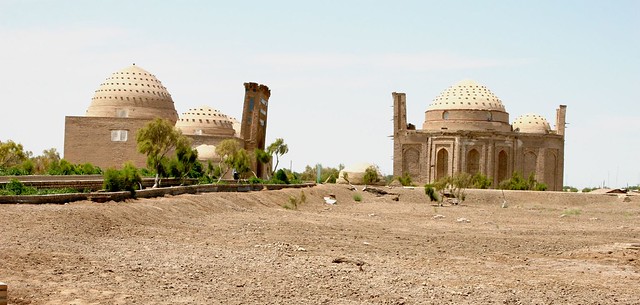
the silk road
Konye-Urgench in northern Turkmenistan is the site of the ancient town of Urgench, which contains the unexcavated ruins of the 12th-century capital of Khorezm. Since 2005, the ruins of Old Urgench ave been protected by UNESCO as a World Heritage Site. Fomerly situated on the Amu-Darya River, Old Urgench was one of the greatest cities on the Silk Road. The Nejameddin Kubra Mausoleum on the left and the Sultan Ali Mausoleum face each other across a shady little courtyard. Nejameddin Kubra was a famous 12th- and 13th-century Khorezm Muslim teacher and poet, who founded the Sufic Kubra order, with followers throughout the Islamic world. His tomb is believed to have healing properties and you find pilgrims praying there.
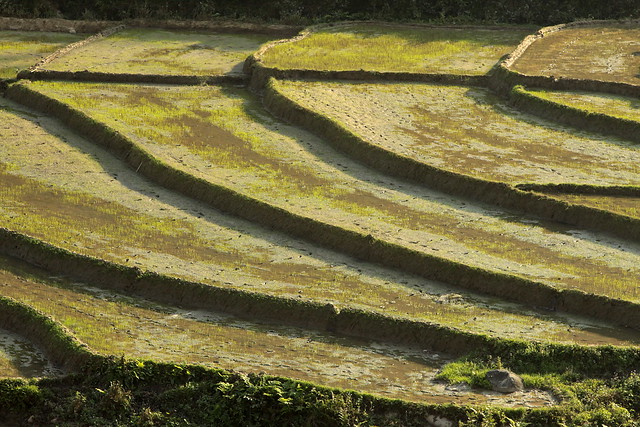
vietnam - rice fields
Rice fields.
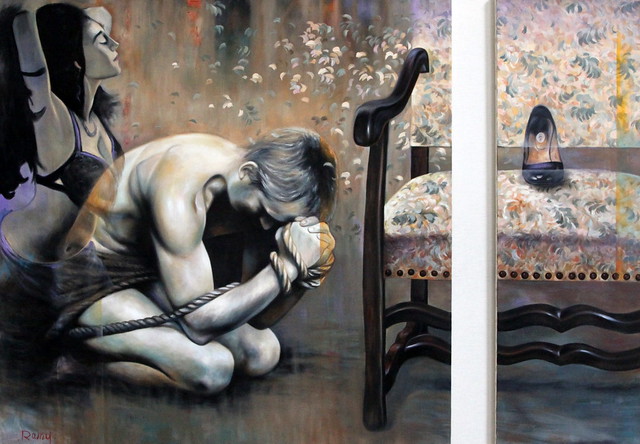
syria
Syrian art - Exposition in Damascus.

vietnam - rice fields
Working in the rice fields.
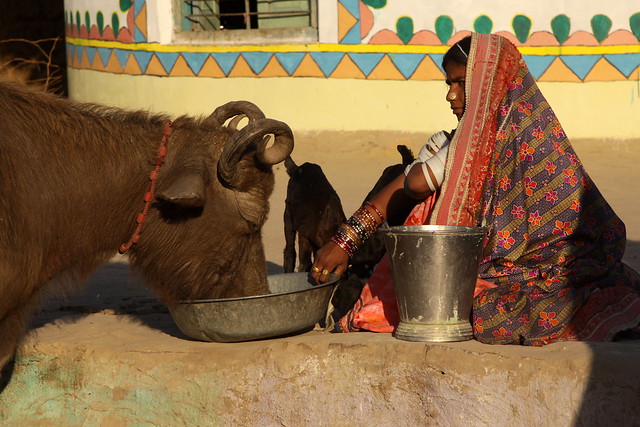
india - gujarat
Meghwal tribal people - Bhirandhiaro village.
Meghwal of Harijan tribal people.
The name Harijan was given by Mahatma Gandhi to the Meghwal people. Hari means God and Jan means People. Meghwals are originally from Marwar in Rajasthan. They are experts in weaving wool and cotton and make attractive leather embroidery and wood carving.
Meghwals live all over Kutch. They always live in groups outside the village. Their houses are very clean and decorated by cowdung mud and mirrors. The men do leather work, wood carving and women do embroidery and patchwork. They live close to the Muslim families. They often borrow embroidery patterns and techniques from Muslim neighbours. They worship Ramdevpir.
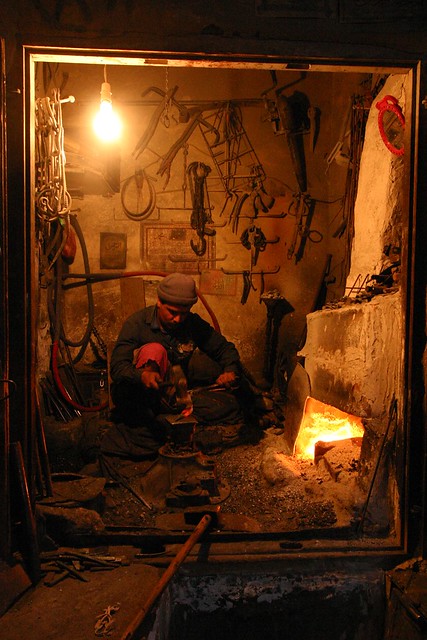
yemen sana'a
Sana'a is the capital of Yemen and one of the most fascinating in the Arab world with its unique architecture, bustling souqs, friendly inhabitants and lack of tourists.
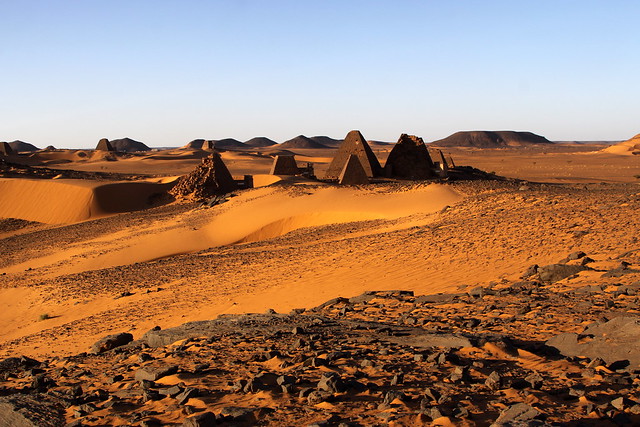
sudan - the black pharaohs
The Meroe Pyramids.
The Meroe Pyramids are located in the North-East of Sudan near the banks of the Nile in the area commonly known as Nubia. There are close to two hundred pyramids in a relatively small area, the ancient burial site of the Merotic Kingdom (sometimes known as the Kingdom of Kush). The Pyramids are smaller than their Egyptian cousins but equally impressive due to their number. The first of the Meroe Pyramids were built about 800 years after the last Egyptian pyramids were completed. The Meroe pyramids were constructed from large blocks of sandstone. They're angled more steeply than the Egyptian pyramids.
The Kush Kingdom flourished for 900 hundred years from around 800 B.C. to 280 A.D. and held power over a vast area covering much of the Nile Delta and as far south as Khartoum. Meroe became very important as the Kingdom's center from around 300 B.C. to 280 A.D. Egyptian influence remained strong and Egyptian artisans were used to build the Meroe Pyramids to commemorate dead royalty. The dead were buried in chambers underneath the pyramids.
Excavations of the Pyramids started in mid 19th Century. Most notoriously, an Italian explorer, Giuseppe Ferlini (1800-1870), smashed the tops off 40 pyramids in a quest to find treasure. What was found was brought back to British and German museums along with samples of Meroitic writing and reliefs depicting historical events. Through the years, the pyramids have been plundered of all their wealth and left to the elements. But many of the pyramids still stand and their architectural elegance is worth a trip. Some of the pyramids have been reconstructed so you get a good idea of what they must have looked like.
See also:
www.flickriver.com/photos/waltercallens/random/
www.flickr.com/photos/waltercallens/favorites/
english.cohga.net/flickr/user/74089637@N00_1.html

azerbaijan
Eddi Gumbez (15 th century) mausoleum and graveyard in Shamakhi (Azerbaijan).
At the foot of Gulistan Fortress is located Eddi Gumbez Mausoleum or “Seven Domes”. This is how people named Shamakhi tomb of Shirvan Dynasty rulers. There the notorious representatives of Shirvan Dynasty were buried. The monument's name is defined be the number of gravestones in the crypt. Today the gravestones look like half-destroyed stone domes as if grown directly from under the ground in the middle of deserted graveyard. Therefore the atmosphere of this district seems a little mysterious.
Shamakhi town is the administrative center of the district. Its population exceeds 83000. It is located 120 km from Baku.
In ancient times Shamakhi was the capital of Shirvan - the state of Shirvanshahs, which was established in the 18th century along with other smaller states after weakening of the dynasty of Abbasids. The town has a glorious but tragic history - it has been devastated many times. And not only by invaders but also as a result of earthquakes since this is an area of high seismicity. When in 1191 Kizil Arslan of Atabeks Eldenisids dynasty seized and grounded the city Shirvanshah Ahsitan the 1st temporarily relocated the capital to Baku. However, in 1501 both Shamakhi and Baku were captured by Shah Ismail Sefevi. 37 years later Shirvan's existence as an independent state ceased and Tahmasib Sefevi founded the state of Sefevids. Afterwards Shamakhi was frequently destroyed in wars with Turkish Ottomans. Not only people were killed, architectural monuments and books were also destroyed.
See also:
www.flickriver.com/photos/waltercallens/random/
www.flickr.com/photos/waltercallens/favorites/
english.cohga.net/flickr/user/74089637@N00_1.html
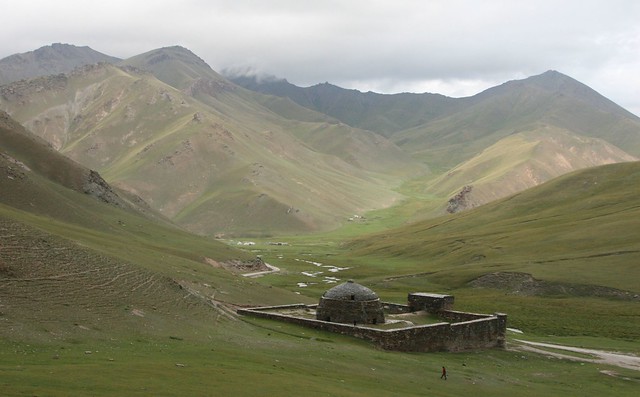
the silk road
Tash Rabat.
Tash-Rabat was constructed in the XVth century, on the ancient trade route from Central Asia to China and was a resting place for merchants, ambassadors, travellers and other wanderers. It is the largest construction built of stone of the Central Asian architecture of that epoch.. It is notable not only for it's size and building materials, but also for its special layout, based on perfect symmetry. Lost among primeval wilderness, far from inhabited localities, the karavanserai looks unbleached, monumental and unassailable.

the silk road
Tash Rabat.
Tash-Rabat was constructed in the XVth century, on the ancient trade route from Central Asia to China and was a resting place for merchants, ambassadors, travellers and other wanderers. It is the largest construction built of stone of the Central Asian architecture of that epoch.. It is notable not only for it's size and building materials, but also for its special layout, based on perfect symmetry. Lost among primeval wilderness, far from inhabited localities, the karavanserai looks unbleached, monumental and unassailable.

armenia
Saghmosavank monastery.
Saghmosavank monastery which stands on the edge of canyon is dated to 1215 when by order of Prince Vache Vachutyan the Surb Sion church was built here. The Monastery from west and south sides was surrounded by huge vestibule and liburary, the composition of which is one of the most rare and non ordinarry in Armenia. Lots of thombs and khachkars are seen on the teritorry of the monastery.
| The Ultimate Self Realization Course (tm) | | |
| Special New Release--Hear It Right Now!! | Special Announcements!
| See Sankarshan Prabhu's | |
| Get Krishna's Special Mercy by Rendering Devotional Service If you'd like to contribute something to help cover the expenses of Sankarshan Prabhu's European Lecture Series you can | On the order of his spiritual master, Srila Prabhupada, Sankarshan Prabhu has dedicated his life for the most urgent work of spreading Krishna consciousness all over the world. The more that Krishna consciousness spreads, the more that the suffering, scarcity, and hate on this planet will be replaced with bliss, abundance and love. This is a golden opportunity for us to do the highest good for all living beings and receive the special blessings of the Lord. Therefore we should, as much as possible, sacrifice our time, energy, and resources to assist Sankarshan Prabhu in his most important work. If you would like to help out to any extent, little or big, kindly inform Sankarshan Prabhu of your desire. | Meet If you would like to meet Sankarshan Prabhu or hear his lectures, you may contact us directly for an appointment or specific information on where and when his lectures will be held. | |
| Do You Have Questions or Need Guidance? | All inquiries are welcome. | Contact Information: Phone: 1-512-835-2121 or Email your questions |

 Sri Krishna Janmastami
Sri Krishna Janmastami Maha Kalash Abhisekha
Annual Patron Member Puja You are cordially invited to sponsor a Golden Kalash to bathe Sri Sri Radha Krishna, on the most auspicious day of
Sri Krishna Janmastami
(September 4, 2007)
This is a wonderful chance for you and your family to sponsor a beautiful bathing ceremony for Sri Sri Radha and Krishna. With your generous sponsorship, you will get to keep the sacred Kalash that the temple priest uses to bathe the Lord on your behalf. We will mail you your golden Kalash along with a wonderful assortment of prasadam sweets that will be offered to Sri Sri Radha Krishna on Janmastami. Your tax deductible contribution with help us to maintain and develop the worship of Lord Krishna.
Your golden Kalash is an amazingly beautiful transcendental work of art that your family will treasure for many generations. It will be shipped to you in a red velvet box as seen above:
There is a very limited supply. So if you would like to to sponsor a Kalash, do so right away before they are all taken: www.backtohome.com/Kalash
| |||||||||
| Home | Thought for The Day | Audio | Videos | Photos | Itinerary | Meditations on Pure Bhakti | Offerings | Services | |||||||||
|

Up

TABLA - FUENTES - FONTS
SOUV2
- SOUV2P.TTF - 57 KB
- SOUV2I.TTF - 59 KB
- SOUV2B.TTF - 56 KB
- SOUV2T.TTF - 56 KB
- bai_____.ttf - 46 KB
- babi____.ttf - 47 KB
- bab_____.ttf - 45 KB
- balaram_.ttf - 45 KB
- SCAGRG__.TTF - 73 KB
- SCAGI__.TTF - 71 KB
- SCAGB__.TTF - 68 KB
- inbenr11.ttf - 64 KB
- inbeno11.ttf - 12 KB
- inbeni11.ttf - 12 KB
- inbenb11.ttf - 66 KB
- indevr20.ttf - 53 KB
- Greek font: BibliaLS Normal
- Greek font: BibliaLS Bold
- Greek font: BibliaLS Bold Italic
- Greek font: BibliaLS Italic
- Hebrew font: Ezra SIL
- Hebrew font: Ezra SIL SR
Disculpen las Molestias

Up
Sankarshan Das Adhikari - ANUAL
Conceptos Hinduistas (1428)SC
Aa-Anc · Aga - Ahy · Ai - Akshay · Akshe - Amshum · Ana - Ancie · Ang - Asvayu · Ata - Az · Baa-Baz · Be-Bhak · Bhal-Bu · C · Daa-Daz · De · Dha-Dry · Du-Dy · E · F · Gaa-Gayu · Ge-Gy · Ha-He · Hi-Hy · I · J · K · Ka - Kam · Kan - Khatu · Ki - Ko · Kr - Ku · L · M · N · O · P · R · S · Saa-San · Sap-Shy · Si-Sy · Ta - Te · U · V · Ve-Vy · Y · Z
Conceptos Hinduistas (2919) SK
Aa-Ag · Ah-Am · Ana-Anc · And-Anu · Ap-Ar · As-Ax · Ay-Az · Baa-Baq · Bar-Baz · Be-Bhak · Bhal-Bhy · Bo-Bu · Bra · Brh-Bry · Bu-Bz · Caa-Caq · Car-Cay · Ce-Cha · Che-Chi · Cho-Chu · Ci-Cn · Co-Cy · Daa-Dan · Dar-Day · De · Dha- Dny · Do-Dy · Ea-Eo · Ep-Ez · Faa-Fy · Gaa-Gaq · Gar-Gaz · Ge-Gn · Go · Gra-Gy · Haa-Haq · Har-Haz · He-Hindk · Hindu-Histo · Ho-Hy · Ia-Iq · Ir- Is · It-Iy · Jaa- Jaq · Jar-Jay · Je-Jn · Jo-Jy · Kaa-Kaq · Kar-Kaz · Ke-Kh · Ko · Kr · Ku - Kz · Laa-Laq · Lar-Lay · Le-Ln · Lo-Ly · Maa-Mag · Mah · Mai-Maj · Mak-Maq · Mar-Maz · Mb-Mn · Mo-Mz · Naa-Naq · Nar-Naz · Nb-Nn · No-Nz · Oa-Oz · Paa-Paq · Par-Paz · Pe-Ph · Po-Py · Raa-Raq · Rar-Raz · Re-Rn · Ro-Ry · Saa-Sam · San-Sar · Sas-Sg · Sha-Shy · Sia-Sil · Sim-Sn · So - Sq · Sr - St · Su-Sz · Taa-Taq · Tar-Tay · Te-Tn · To-Ty · Ua-Uq · Ur-Us · Vaa-Vaq · Var-Vaz · Ve · Vi-Vn · Vo-Vy · Waa-Wi · Wo-Wy · Yaa-Yav · Ye-Yiy · Yo-Yu · Zaa-Zy










No hay comentarios:
Publicar un comentario